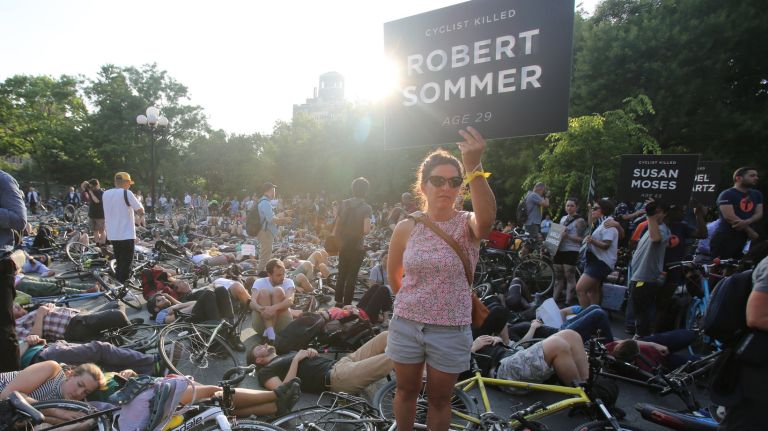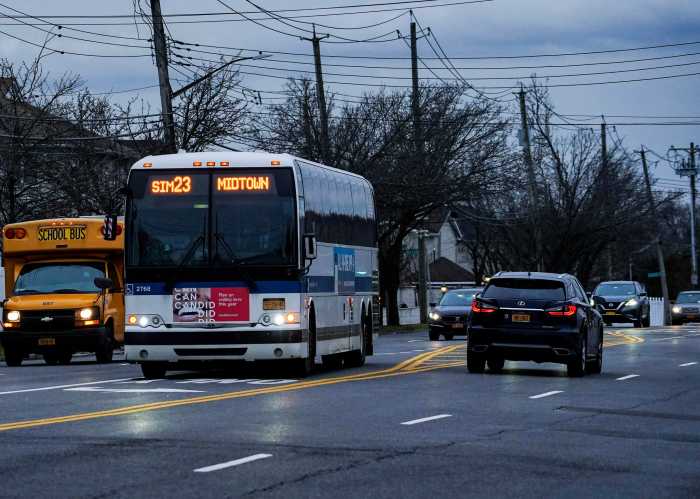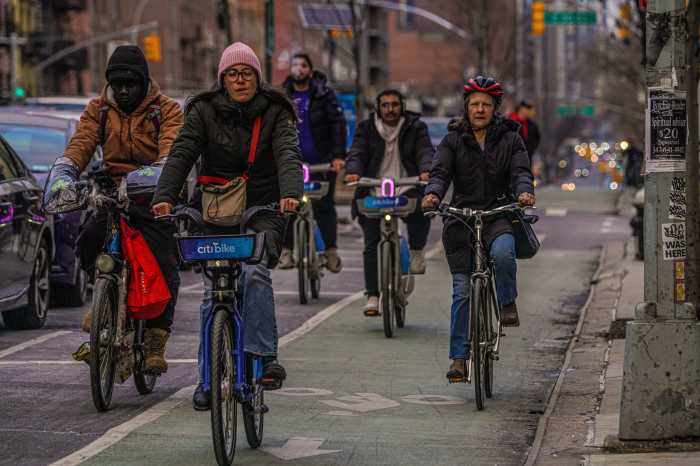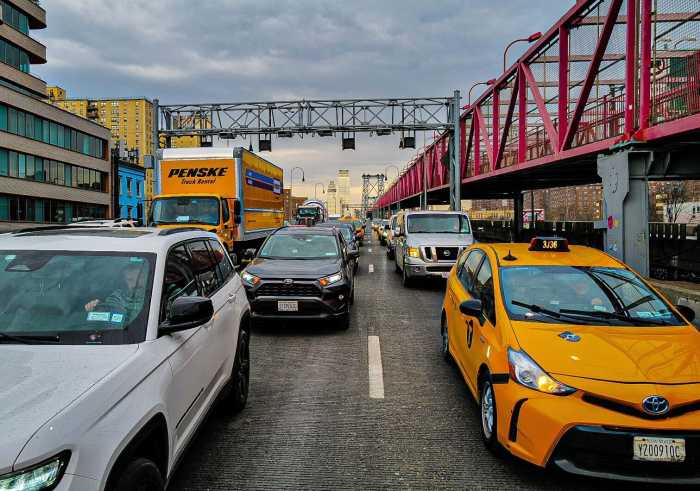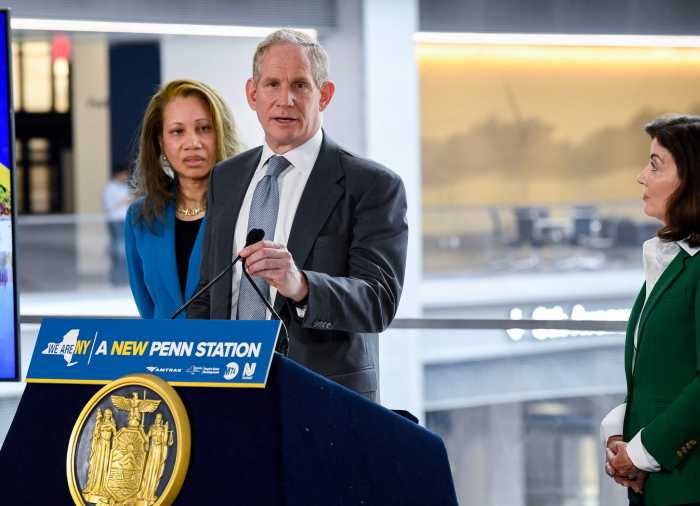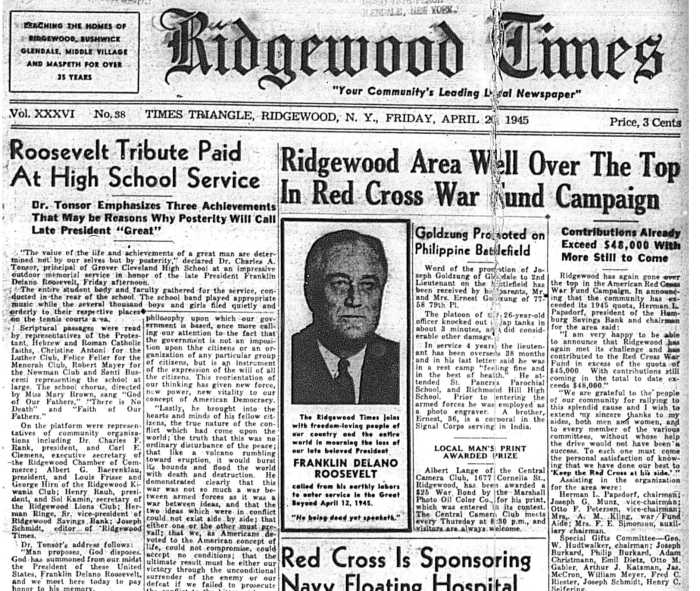This year has been a remarkably tragic on city streets; 2019 marked the first there was a rise in traffic deaths for the first time under the de Blasio administration and the mayor’s Vision Zero initiative.
Cycling deaths have nearly tripled in 2019 — up to 29 this year compared to 10 in all of 2018. It was the first significant surge in cycling deaths over the past decade, during which fatalities have remained fluctuated but remained fairly consistent, even as cycling became much more popular.
But recent trends have alarmed advocates who are pushing for safer more efficient streets.
Some saw 2019 as indicative of the mode shift away from mass transit and toward cars. As subway and bus ridership as dropped, e-hail service has surged. Citywide traffic volumes have grown, as have the number of car registrations. More reliance on personal cars, means more dangerous streets, advocates fear.
Mayor Bill de Blasio responded to the uptick in cycling deaths this summer, announcing a sweeping new “Green Wave” plan to more aggressively roll out protected bike lanes and adjust traffic light timing to better cater to slower speeds of cyclists.
But 11 cyclists have died since that plan was released.
Congestion Pricing
This year also marked the passing of a historic congestion pricing policy for the most traffic-clogged area of Manhattan–a plan that is expected to both address mounting car traffic but also provide billions in funding to the MTA and one that advocates have sought for more than a decade.
The state Legislature voted to approve the policy back in April, giving MTA officials until 2021 to hash out toll costs, structure and any possible exemptions. But the commuting public is still waiting on those key details.
The MTA is expected to next year convene an influential panel–the Traffic Mobility Review Board–to make those policy decisions, but officials at the authority have insisted that the board can meeting and craft its decisions out of public view, in closed-door meetings. Those decisions will determine the fate of congestion pricing and whether it could successfully move people out of their cars.
The roughly $15 billion expected to be raised through congestion pricing would go toward the MTA’s next capital plan, which has outlined major priorities that include a major subway signal modernization and push to take on the MTA’s abysmal accessibility record, with money allocated to make 70 subway stations wheelchair accessible.
At the same time, advocates have warned that the city and state should be crafting a bolder vision to reimagine Manhattan streets, giving more priority to buses and bikes–something that would make those options more attractive to drivers when the state asks them to pay more.
Subways and buses
There’s been little progress on that front, but a major beacon of light to bus boosters in 2019 was Manhattan’s 14th Street busway pilot. After enduring months-long delays due to litigation, the transit priority corridor between Third and Ninth Avenues has, by all accounts, been a success.
Bus speeds and ridership on the M14 have both increased while only bringing relatively small increases in traffic along neighboring side streets.
As the bus network has seen severe drops in trips and worsening reliability, advocates and elected officials have already begun making the argument to bring the design to other major streets across the city. It’s unclear how soon such projects could come, as the mayor has kept his relative distance from the project. He first rode the corridor three months after the busway first launched.
Underground, the subways became relatively more reliable, peak train run times and weekday on-time performance improved. While MTA officials admit there is still a lot of work ahead before reaching acceptable levels of service, 2019 marked a halt in a two-year decline of subway ridership.
But in the midst of that progress, the MTA bookended the year with a controversial debate over the hiring of a new, 500-member police force to crack down on fare evasion, homelessness and worker assaults through the transit system.
While major felonies are trending down the in the subways, the authority has sent mixed signals on the need for the new officers. MTA Transit President Andy Byford recently called the subways “remarkably safe” even as Chairman and CEO Pat Foye warned about returning to “the bad old days” in the transit system.



